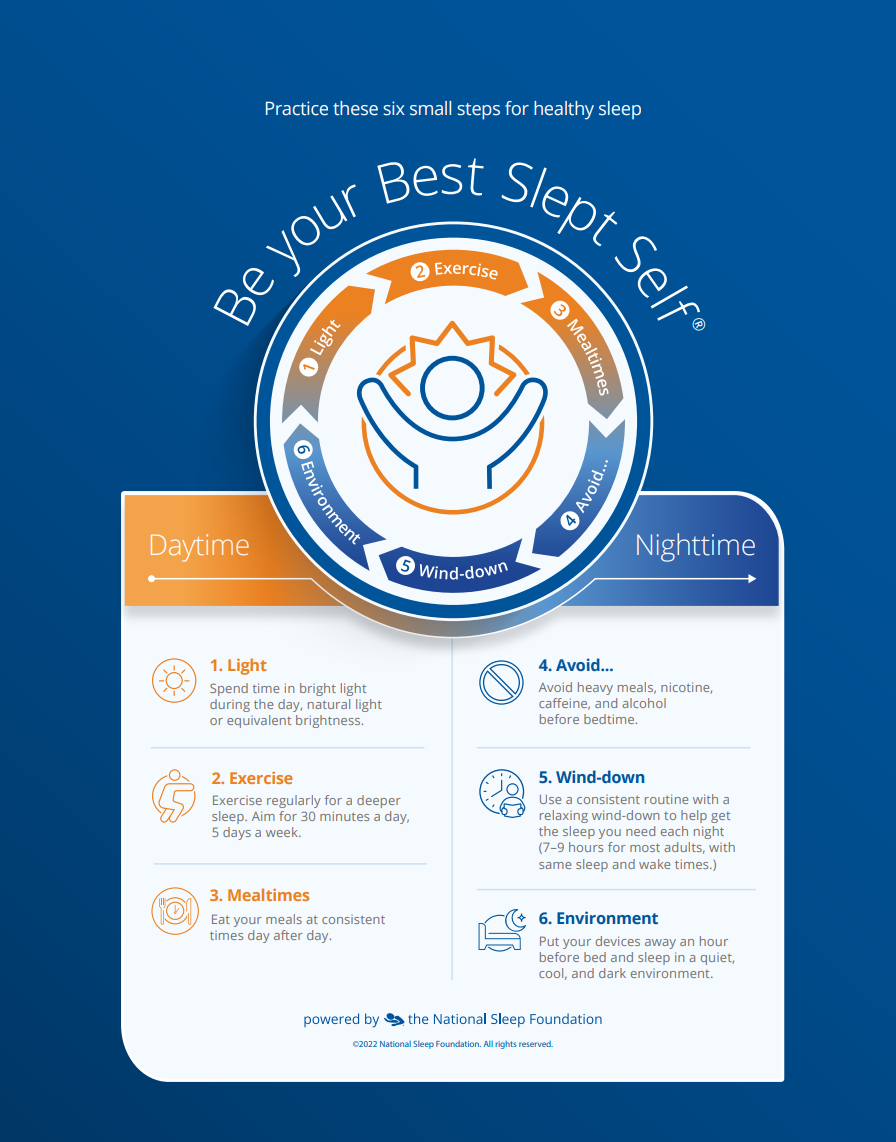Monday Campaign: Sleep Awareness Week
This year’s Sleep Awareness Week is March 10–16, and this past Sunday marked the return to daylight saving time. Every year, the National Sleep Foundation (NSF) takes this time to reemphasize the vital connection between sleep and our overall health and wellbeing. The NSF encourages us to become our “best slept selves.”
Small steps during the day go a long way in helping improve sleep at night.
Did you know that a good night’s sleep starts with what we do during the day? In fact, from the moment we wake up, we’re affecting the sleep we will get that night. The NSF’s 2022 Sleep in America Poll revealed that Americans’ daily routines create less-than-ideal conditions for a good night’s sleep. As it turns out, many of us could do a better job at establishing healthy daytime behaviors to improve our sleep.
The good news is that we all have the potential to improve our sleep — just by taking some small steps during the day. And changing our daytime habits not only sets the stage for sounder rest but also leads to lower stress levels and better overall health.
Check out the NSG graphic below for simple changes — day and night — to help us become our “best slept selves.”
Want more info? Consider the following resources:
- Daily Flyer article: Healthy Weight Week: Optimize Sleep
- Sleep Awareness Week 2024 | National Sleep Foundation
- Healthy Habits to Help You Sleep Better | Anthem
- If you’re struggling to snooze soundly, some super-simple changes could help you sleep and — ultimately — feel better.
- Basics About Sleep | CDC
- Find out how much sleep is recommended for different age groups and get tips on improving your sleep.
- Mastering Sleep Hygiene | Sleep Foundation
- Read or listen to learn what sleep hygiene is, why it matters and how to revamp your habits to get better nightly sleep.
- Visit the American Academy of Sleep Medicine to learn about the most common sleep disorders, symptoms and potential treatment options.
- For even more on sleep, click this link from the Monday Campaigns.

Submitted by:
Dahlia Henry-Tett, Chief Wellness Officer (CWO), employeewellbeing@nvcc.edu
